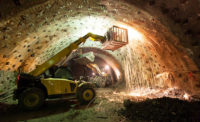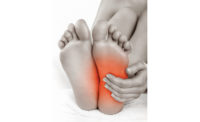For years now we’ve heard about artificial intelligence’s transformative role in revolutionizing the workplace — and environmental health and safety.
- “Artificial intelligence in health and safety can revolutionize occupational health and safety…”
- “AI has enormous potential to manage OSH…”
- “AI and automation are transforming traditional processes and improving safety…”
The transformation is well underway. According to McKinsey & Company, approximately 50% of companies reported using AI in at least one area of their business as of 2022. PwC topped that projection, reporting 73% of U.S. companies have already adopted AI in at least some areas of the business. (A study by Morning Consult and IBM reports 35% of companies are using AI, and 42% are still exploring the technology. An accurate estimate of AI usage in the business world is proving to be a moving target.) A whopping 83% of companies claim using AI in their business strategies is a top priority, according to Forbes magazine. And the global AI market is expected to explode by more than 37% per year from 2023 to 2030, according to Grand View Research.
Many environmental health and safety professionals are leaning into the new technology – with many more to follow — and learning as much as they can about both AI’s potential positive and negative consequences in the EHS field.
AI’s positive impact
Let’s start with the positives. Case studies are one way of reviewing AI’s benefits for EHS practices. According to an article written in 2023 by Dr. Mark van Rijmenam, CSP:
- General Electric uses predictive modeling and AI-driven safety checks to identify potential equipment failures and safety hazards.
- ExxonMobil uses virtual reality simulations to train workers about critical tasks and emergency procedures.
- Chevron employs augmented reality and mixed reality technology to create realistic virtual environments for practicing emergency response procedures.
AI applications in the EHS field are far-reaching, as described in numerous magazine articles, web posts and conference education sessions. Just ask ChatGPT. The litany of advances include EHS program management software; wearable devices and sensors for real-time worker health monitoring; continuous monitoring using sensors and cameras throughout a facility to detect potential hazards; automated safety checks; predictive modeling using algorithms to analyze historical data and identify injury and incident trends; computer vision-equipped cameras to detect and alert drivers about distracted driving or lane shifting; robots of course; and cobots (collaborative robots) used in manufacturing and assembly lines to reduce worker fatigue and ergonomic strain by handling repetitive and physically demanding tasks.
Abounding apps scare some workers
Now for the negatives. So extensive are AI’s applications in the workplace they raise concerns about worker mental health. The American Psychological Association’s 2023 Work in American survey found 38% of U.S. workers are worried AI may make some, or all, of their job duties obsolete in the future. “AI anxiety” regarding the future has a carryover effect right now on the workers who feel threatened, according to the survey:
- 51% said their work has a negative impact on their mental health;
- 33% report their general mental health is poor or fair;
- 46% of workers worried about AI making some of all of the job duties obsolete intend to look for another job;
- 64% report typically feeling tense or stressed during the workday.
Workers concerned about AI’s impact are also more likely to experience symptoms of workplace burnout, according to the survey: irritability; anger toward coworkers; not feeling motivated; lower productivity; feelings of exhaustion; and feelings of being ineffective.
Health effects lack hard evidence
To be sure, it must be noted that empirical evidence on one aspect of the AI revolution – robots – and their impacts on workplace safety and health remains sparse, according to the Centers for Disease Control and Prevention. “The impact of robot adoption on workers’ health is theoretically uncertain and remains an open question for empirical investigation,” according to the CDC.
Numerous academic papers, however, have discussed the substitution effect of robots. A 2017 report by McKinsey & Company indicated that by 2030 as many as 800 million workers worldwide could be replaced at work by robots. The study found that in more advanced economies like the U.S. and Germany, up to one-third of the 2030 workforce may need to learn new skills and find new work.
It is studies such as McKinsey’s, and headlines such as this one by CNBC – “AI and robots could threaten your career within 5 years” that stir the fears of almost four in ten workers who worry that jobs could be lost to AI in the future.
Potential health impacts
AI is reshaping the nature of job tasks and could directly impact worker satisfaction and feelings of dignity in the workplace, according to the American Psychological Association (APA). Adoption of AI might also be linked to increased work expectations, intensifying workloads, and increasing pressure on workers to learn new skills or transition to different roles – work factors that could lead to feelings of inadequacy and anxiety, according to the APA.
Other possible ill health effects:
- A study, “Industrial robots, Workers’ safety and health,” published in Labour Economics in 2022, found evidence that robot penetration was associated with sizable increases in drug and alcohol-related deaths and mental health problems.
- A potential consequence of working with collaborative robots (cobots) is workers having to keep pace with a cobot’s pace and level of work to maintain the same productivity. This physical strain is accompanied by the mental strain of reduced contact with human peers and social support due to automation, according to European Agency for Safety and Health at Work.
- Automated tasks can be associated with more sedentary work with less variation in tasks, and with workers being left with repetitive work, according to the European agency. This could raise risk factors of cognitive underload and boredom, isolation and lack of interaction with peers, which are known psychosocial risks, according to the agency.
- The ever-increasing mountains of data being collected about workers through wearables, mobile devices, or embedded monitoring devices in clothing or personal protective equipment could monitor keyboard clicks, the content of emails, websites visited, number and content of telephone calls, location through GPS tracking, body movements, vital signs, indications of stress or fatigue and micro-facial expressions and tone of voice. Supervisors and managers, armed with profiling data — even if anonymous — could lead to micromanagement, and anger a percentage of workers who feel their privacy is being invaded. This tension can add to anxiety and stress.
Calming fears and worries
Transparency in collecting and using data on workers, and how a company plans to integrate AI into existing health and safety protocols, is important to give workers AI-driven insights and understanding. A proactive roadmap for AI integration includes:
- Assessing high-risk tasks, inefficiencies in safety monitoring, and current health and safety practices to determine where AI might add value;
- Conducting pilot programs and trials to test the feasibility and efficiency of AI and to gather feedback from frontline workers to improve AI algorithms;
- Investing in training the workforce to understand AI and its applications in health and safety; and
- Ensuring personal data collection and profiling of workers meets legal and ethical requirements and workers have access to the information.
Mental health and well-being are increasingly recognized as an important, and underserved, area of workplace health and safety. The AI revolution presents many positives, and yes, challenges and fresh opportunities to detect and care for work-related mental health issues, and keep mental health visible and a high priority within organizations.




